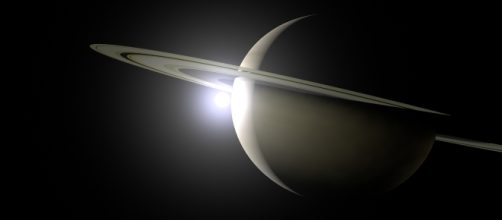A recent study discovered that Saturn's moon Titan has the chemical called acrylonitrile. The chemical is believed to exist in the moon's atmosphere and it is important because it could enable membranes to form, which may then lead to the formation of life.
Titan has always been an intriguing moon. There are a couple of studies that have already suggested that the moon has the "right chemistry" for life. But the recent study delved deeper into the theory and discovered the actual chemical Titan has.
Titan's chemistry
NASA scientists were the ones responsible for the discovery of the chemical acrylonitrile on Saturn's moon, Titan.
The substance is a known precursor of life. The chemical is also found on Earth and is called vinyl cyanide which is used in manufacturing plastics. According to NASA, when placed in the harsh environment of Saturn's largest moon, the chemical may form sturdy and flexible structures similar to cell membranes.
In order to detect the chemical, NASA scientists analyzed the data collected by the Atacama Large Millimeter/Submillimeter Array (ALMA) located in Chile. Based on the data, large quantities of the chemical are present in the atmosphere of the moon, possibly in the stratosphere, the same part of the atmosphere where the brownish-orange color of Titan originates.
“We found convincing evidence that acrylonitrile is present in Titan’s atmosphere, and we think a significant supply of this raw material reaches the surface,” Maureen Palmer, a scientist at NASA’s Goddard Space Flight Center and lead author of a July 28, 2017, paper in Science Advances, said.
The paper whose lead author is also Maureen Palmer was published in the journal Science Advances. Based on the study, scientists also believe that acrylonitrile molecules can potentially bind together in sheets or microscopic sphere called "azotosome." From the sphere, lipid bilayers can then form.
Pathway to life
The sphere from the formed membrane serves as a tiny container. This is vital as having a confined space separating the external and internal environment will give the chemicals enough time to interact. The director of the Goddard Center for Astrobiology, Michael Mumma said that if the structures similar to membranes can indeed be formed by the chemical found in Titan's atmosphere, then this is a very important stage in the "pathway to life" on the Saturn's largest moon.
NASA scientists at Goddard are confident that there's a great amount of acrylonitrile on the moon amounting to 2.8 parts per billion. The chemical is believed to be present in the stratosphere's altitude at about 125 miles (200 kilometers).


